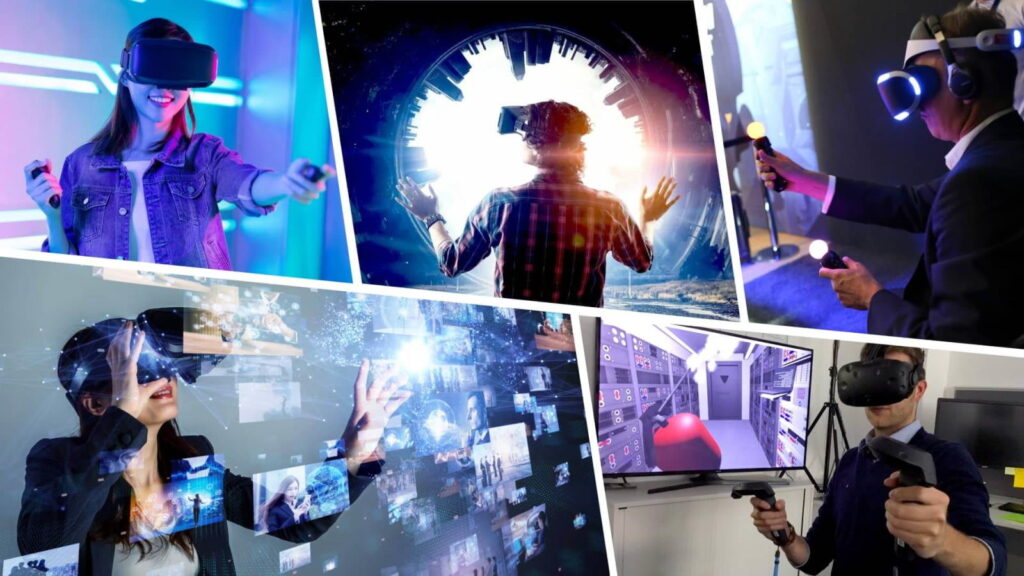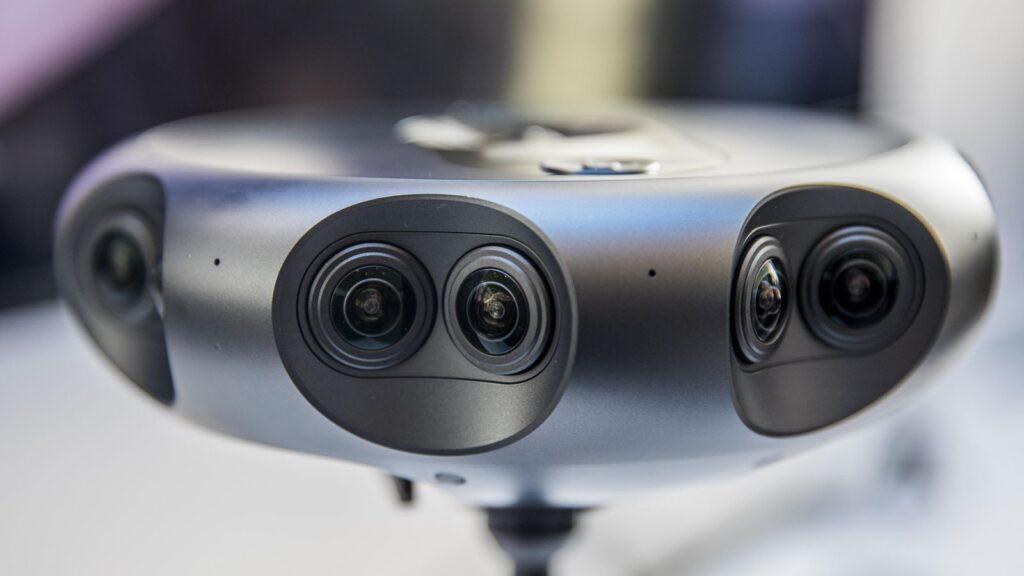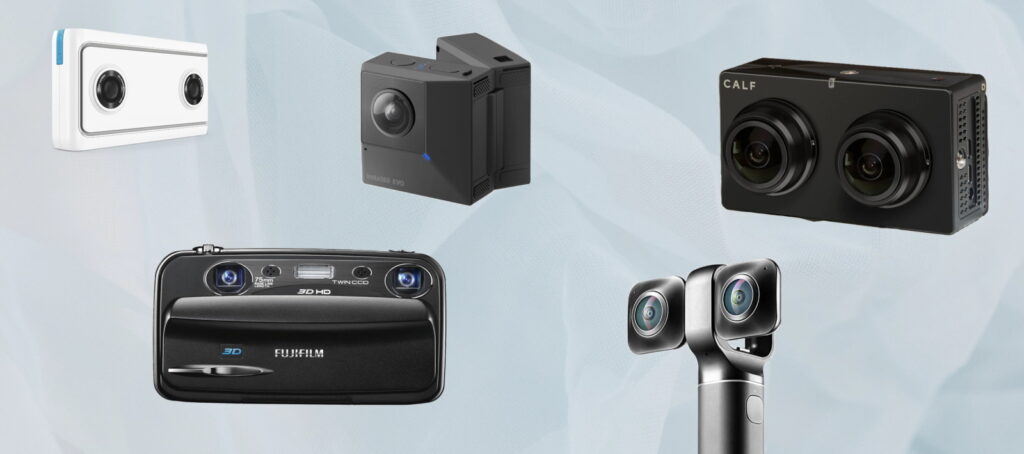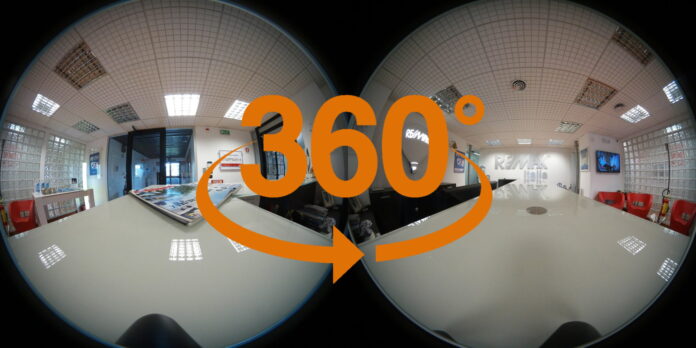Table of Contents:
Somewhere heard about VR, 3D 360 video and want to know what it is? Then this article is for you. Let’s talk about all the video formats in VR and a little bit about virtual reality itself.
Basic – what is virtual reality
VR or virtual reality is when you wear a special headset that hides the world around you from your eyes and replaces it with a completely different image. In this case, the image for the left and right eyes will be slightly different. In this way, the effect of binocular vision is achieved, as in real life.
Looking at objects in the VR headset, you will “feel” the distance to them. And when you turn your head, special motion sensors will correct the image so that it stays in place. What does that mean in practice? Just look around you. VR allows you to replace everything you see now with anything you want. And most importantly, you will feel like you are really in a different place.
When it becomes possible to replace the real world with the virtual world in such a way that it is almost impossible to notice the difference, there are tons of possibilities. You can watch videos recorded on a special 360-degree camera and instantly travel the world. Or play VR games and physically feel like you’re in your character’s shoes.

A brief look at the difference between virtual reality video and video for 3D TVs
The virtual reality video is shot on a special camera with two lenses and contains 2 separate video sequences – for the left and right eye.
You can draw a parallel with a 3D movie in a theater, but it would not be quite correct. Unlike 3D in a movie theater, where one image is superimposed on top of another, in a VR headset each eye sees a separate video sequence without distortion.
With two separate images and the fact that the video in the VR headset is as close to the eyes as possible, the “magic” of virtual reality is created. This effect is impossible to achieve with conventional 3D, because the one who watches VR video feels directly inside the event as in real life.
Details about the different formats. VR, 360 and VR (3D) 360 video
Among virtual reality videos, there are 3 main formats.
360 video

360 videos are very often referred to as “VR videos”, but that’s not really true. 360 videos are shot on a camera that records everything that happens around it. Such content can be watched in a VR headset and it would be great to be able to have a 360 degree view. However, such videos do not have stereo pairing.
360 videos do not give a sense of “depth” and 3D effect, but allow you to watch what is happening in any direction.
Pros:
- Full 360 degree view
- 2x better quality, compared to 3D 360 video, for the same file size.
Cons:
- No 3D effect due to lack of stereo pairing in the video (both eyes see the same picture)
3D 360 video

3D 360 is already a full-fledged virtual reality video. In addition to a full 360 degree view, such content has a stereo pair (2 separate video streams in one file), which gives the effect of “depth”.
Such videos are much rarer than regular 360 videos due to the high cost of production equipment. However, it is these videos that can provide the most memorable experience when watching VR content.
Pros:
- Full 360 degree view
- Two separate video sequences for each eye, creating a 3D effect
Cons:
- Huge file size. Clips that are several minutes long can occupy dozens of gigabytes of data on your hard disk.
3D 180 video

The most common video format in virtual reality has become 3D 180. This is the format that is most often meant when it comes to VR video.
Such content, although limited to a 180 (sometimes 220) degree viewing angle, allows you to shoot full 3D VR videos in the highest quality, with a relatively small file size.
In cases where the viewer only needs to see what’s in front of them, this format is the best fit. 180 3D strikes a balance between the quality of the VR experience, the size of the source file, and the cost of producing such content.
Pros:
- 2x better quality, compared to 3D 360 video, for the same file size.
- Two separate video sequences for each eye, creating a 3D effect
Cons:
- Lack of 360 degree view. If you look back, there is a black screen.
Why the file size of VR videos is many times larger than 3D movies
It is very important to understand the fundamental feature of VR video. A file with such a video actually contains 2 video sequences. One for the left eye and one for the right eye. When viewed in a VR headset, special optical lenses magnify each of the video streams several times.
In this environment, the native resolution requirements in VR video are some of the highest in the industry. To understand the difference, watching VR video is like watching a 3D movie up close to a TV through a magnifying glass.
For VR video quality to be as close to the real world as possible, the resolution of the video must be very high. Nowadays, it is not uncommon to see VR videos in 8K resolution and this is not the limit of the requirements of this technology.

